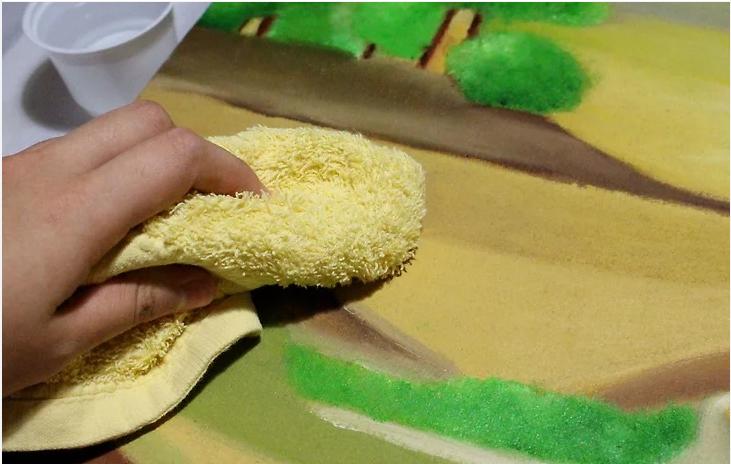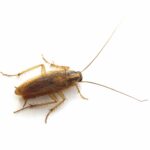Maintaining the Timeless Beauty of Oil Paintings: Cleaning Tips and Myths
Oil paintings, cherished by art enthusiasts, often face the challenge of accumulating dust and dirt over time in the spaces where they hang or are stored. Many friends, especially those with antique paintings, inquire about reviving the vibrant colors of their artworks. I’ve explored ways to rid the paintings of dust, and I’m here to share the insights with you.
Cleaning an oil painting without compromising its surface or appearance is a crucial skill. It’s no secret that oil paintings require a bit more care when displayed, cleaned, and preserved in their best condition. Whether you’ve recently acquired a new piece or uncovered a historical treasure, knowing how to care for and, especially, how to clean your oil painting determines how it will always appear.
In this guide, we will teach you how to care for your painting, outlining dos and don’ts, and guide you on how to ensure it lasts forever with appropriate cleaning and maintenance. Let’s delve into the world of preserving oil paintings.
Oil Paintings Can Last a Lifetime
Oil painting has long dominated the art world, contributing to the creation of some of the most famous artworks. Furthermore, oil paintings show no signs of aging. The impeccable detail and color richness of oil paintings captivate people, and despite the availability of different painting techniques like acrylics, gouache, and watercolors, none can truly rival the artistry of oil paintings.
Removing Dust from Oil Paintings
Is your oil painting collecting a layer of fine dust, dirt, or residue? The easiest way to remove such particles is to use a soft cloth and soapy water. Due to its low pH level and gentle properties, olive oil-based soap is generally considered the most effective. Ensure not to use anything containing alcohol, as it may remove some of the paint. Gently wipe your painting with a damp cloth, and you’ll instantly see how much dirt comes off. For corners or textured areas created with a spatula, cotton swabs can be used.
Deeper Cleaning for Oil Paintings
While most dust should come off, if there’s still dirt on the canvas, avoid vigorous rubbing, as it can cause the dry paint to crack. If your painting has been exposed to dust or accumulated it over time, or if the dust has settled beneath the paint’s surface, it may require a more robust cleaning product. Due to the chemical properties of these products, seeking help from an art restorer is advisable. Regardless of your painting’s lifespan, value, or size, if you’re unsure, never attempt it yourself. Avoid taking unnecessary risks.
Cleaning Oil Paintings on Paper
An increasing number of oil paintings are being created on paper. When cleaning on paper, ensure that no other paint, especially water-based, has been used before you begin. If uncertain, it’s best to use a soft, dry paintbrush to gently dust the surface. Make sure your brush isn’t too abrasive, and brushes with sable bristles are generally considered the best. Using household brushes can be risky and may damage your painting.
As a general rule, artworks on paper are protected by the glass of a frame, so cleaning often involves the frame rather than the painting itself!
Myths about Cleaning Oil Paintings
- Cleaning with Starchy Foods: Using starchy foods like bread and potatoes to clean oil paintings is a common misconception. This method is not effective and may leave unwanted crumbs and residues on your piece.
- Avoiding Vinegar or Potatoes: Some suggest using vinegar or sliced potatoes to clean oil painting surfaces, claiming it’s an excellent way to remove dirt and grime. However, it’s not recommended, especially for valuable or old paintings, as it can cause unintended damage.
- Using Baby Oil for Cleaning: Another misconception is that baby oil can effectively clean the surface of an oil painting. While it’s gentle and won’t harm the paint, baby oil can leave an undesirable stickiness and shine when dried, making the surface more susceptible to attracting dust.
Accepting the Reality: Some Paintings Can’t Be Cleaned
If your painting is valuable, a professional conservator may determine that leaving it as it is, for now, is the best approach. Cleaning techniques are still being researched and developed by art historians, so future advancements may safely clean your valuable piece.
Take Your Valuable Paintings to Professionals
The surface of an oil painting is delicate, and home cleaning techniques may permanently alter or damage it. If your oil painting is old, valuable, or has sentimental value, it’s not recommended to clean it at home. Take it to a professional for cleaning.
Insure Your Valuable Paintings Before Professional Cleaning
Before allowing a professional to clean your painting, ensure that your valuable pieces are insured. If you’re inclined to clean the painting yourself, practice your techniques on an inexpensive oil painting first to measure the results.
Conclusion: Preserving the beauty of oil paintings requires a delicate touch and a nuanced understanding of the cleaning process. Whether you’re dealing with an antique masterpiece or a recent acquisition, following the appropriate cleaning methods will ensure your oil paintings remain vibrant and timeless. Always prioritize professional help for valuable and sentimental pieces, and consider insurance before undergoing any cleaning process.










